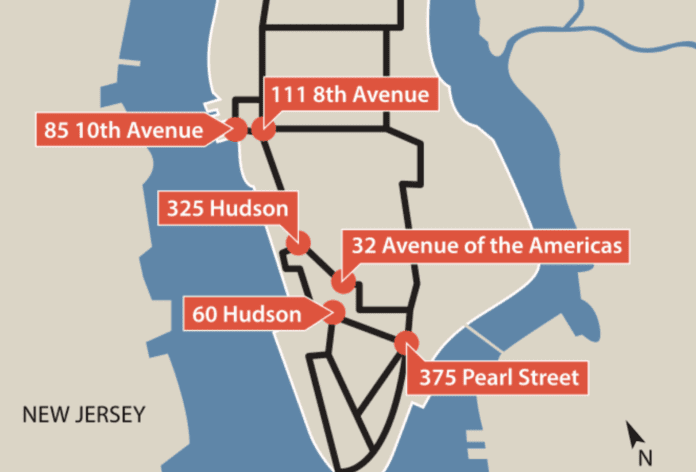ExteNet Systems added to its fiber optic holdings today with the completion of its acquisition of Axiom Fiber Networks; terms of the deal were not disclosed.
Axiom owns a 20-mile, 864 strand count core network the company describes as “purpose built to support solutions requiring high-quality fiber connectivity in any type of density situation,” that covers Midtown and Lower Manhattan.
“Our customers, including service providers, building owners, municipalities and enterprises require scalable, reliable, secure and high-bandwidth network solutions,” Ross Manire, President and CEO for ExteNet Systems, said. “ExteNet has an expansive fiber network in New York City, serving outdoor and in-building customers. This acquisition of Axiom Fiber Networks allows us to extend and densify our service footprint in lower Manhattan for the benefit of our customers. I would like to welcome Axiom customers, and employees, to the ExteNet family.”
With the acquisition, Axiom’s CEO Felipe J. Alvarez will join ExteNet’s management team.
Manire has spoken regularly about the need for fiber-deep networks. During the Wireless Infrastructure Association’s most recent event, the HetNet Expo, he said, “You’re going to need a lot more nodes and a lot more densification of the networks to do some of the very interesting things that we see coming. We use an internal term that we call ‘hyper-densification.’ There’s a lot more to be built. The market opportunity is significant.”
Giving a brief, historical look at the company, he said the original thesis was providing distributed networks in areas where obtaining macro site permits was prohibitive. “Most of the networks focused on coverage solutions.” Then, in 2007, Apple released the iPhone. “Our world changed,” and capacity became and continues to be the focal point. “That really is the state of play as we see it today.”
And, with the 3GPP planning to finalize the 5G New Radio specification next year, and operators and vendors eager to deploy and commercialize, that state of play will continue to evolve.
“5G clearly will be about capacity enhancements, but, more importantly, its going to be about network functionality. tG is not just going to be about the individual phone or tablet user and enhancing their experience. It’s going to be about more intelligence, and it’s going to be a new architecture that we all have to become familiar with and be prepared to work with. The key here, and I think this is the really important point, is that we have to find business models that will take advantage of lower latency and higher system capacity, throughput, energy efficiencies and so forth, that will be able to generate the returns necessary to fund the network investments that are going to be necessary going forward to support 5G.”

